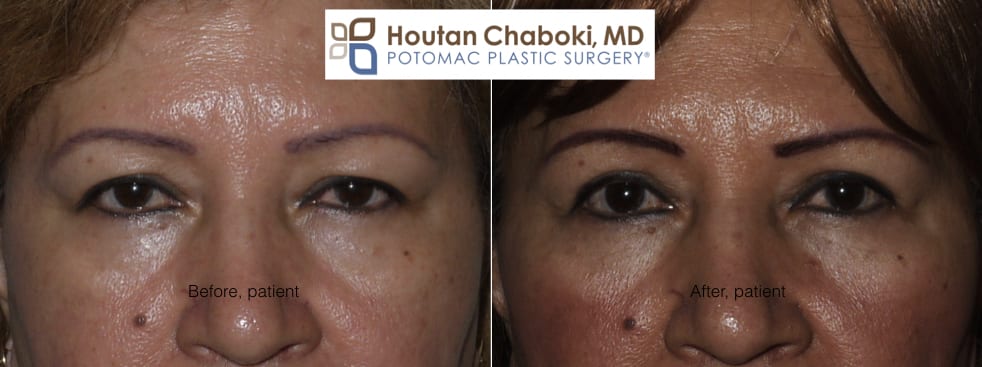Blépharon is the Greek word for eyelid. Blepharoplasty is the medical term for plastic surgery of the eyelid, either lower or upper. Some who want a more enhanced rejuvenation of the eyes may choose a “quad blepharoplasty”, where both upper and lower eyelid surgery is performed.
Upper blepharoplasty is very popular and falls into three general groups of patients: Wrinkled eyelid, Droopy eyelid, Asian eyelid. Men or women can fall into one of these groups, while some patients may have mixed reasons for having upper eyelid surgery.
Upper blepharoplasty for Wrinkled eyelid
This group are patients, who are often over 40, reports excess upper eyelid skin, wrinkles, droopy brow, or tired appearance of the eyes and want a refreshed and rejuvenated appearance. They report excess skin of the upper eye area, with or without excess eye fat. The excess skin may cover and hide the eyelashes. Makeup can be difficult to apply to the eyelid too. Read more about cosmetic upper blepharoplasty.
Upper blepharoplasty for wrinkled eyelid removes skin primarily, with or without excess fat. Brow lift surgery may be recommended in addition to upper eyelid surgery by your plastic surgeon. Read more about brow vs. bleph.

Upper blepharoplasty for wrinkled eyelid by Dr. Chaboki, a Washington DC cosmetic surgeon. Patient had excess skin that hid her eyelashes.
Upper blepharoplasty for Droopy eyelid
A second upper eyelid surgery group are patients who have a droopy eyelid that sags and blocks peripheral vision. The upper eyelid has fallen into a lower position. Ptosis is the medical term for droopy eyelid and is more common in patients over 60. Ptosis is often considered a medical condition that most commonly develops gradually from natural aging (i.e. senile ptosis), but may be present for many other reasons. An ophthalmology evaluation can help determine the etiology of ptosis.
Upper blepharoplasty for droopy eyelid primarily lifts the eyelid by tightening a specific eyelid muscle, and may remove some eyelid skin.
Upper blepharoplasty for Asian eyelid
The last general group of upper eyelid surgery patients are of Asian ethnicity who want to create a crease or “double eyelid”. Asian patients who have upper eyelid surgery are more likely to be teenagers or young adults, as this type of blepharoplasty is not age dependent. Read more about Asian eyelid surgery.
Upper blepharoplasty for Asian eyelid primarily creates a crease in the upper eyelid, and may also remove a conservative amount of skin.

Revision upper blepharoplasty for Asian eyelid by Dr. Chaboki, a Washington DC cosmetic surgeon. Patient had both an ill-defined upper crease and excess skin.
Upper blepharoplasty in any of the above groups can be performed under awake, local anesthesia. Sedation may not be necessary in appropriate candidates. Recovery after upper eyelid surgery is generally easy too.
Have you considered upper blepharoplasty? Consult with a facial plastic surgeon Dr. Chaboki who often performs the procedure via awake, local anesthesia. He sees patients who travel far to see him for his expertise on eyelid rejuvenation surgery.

Leave a Reply